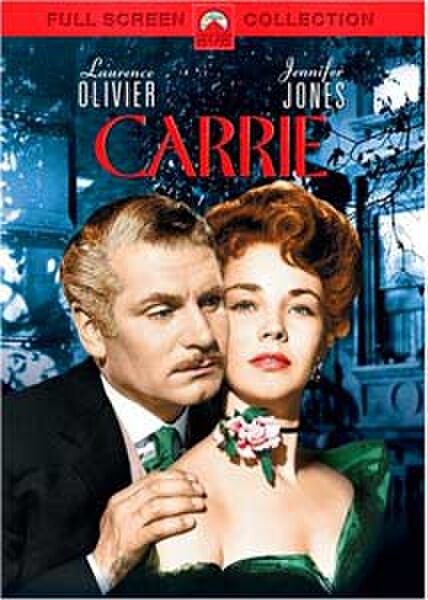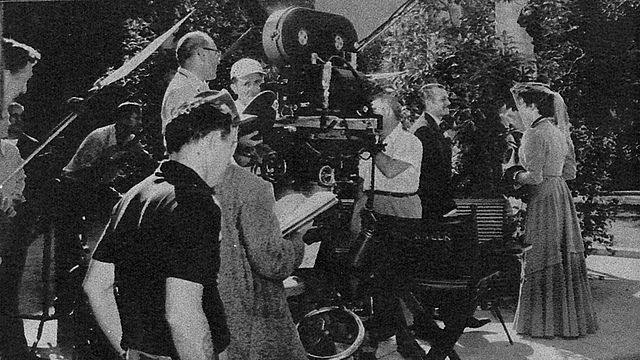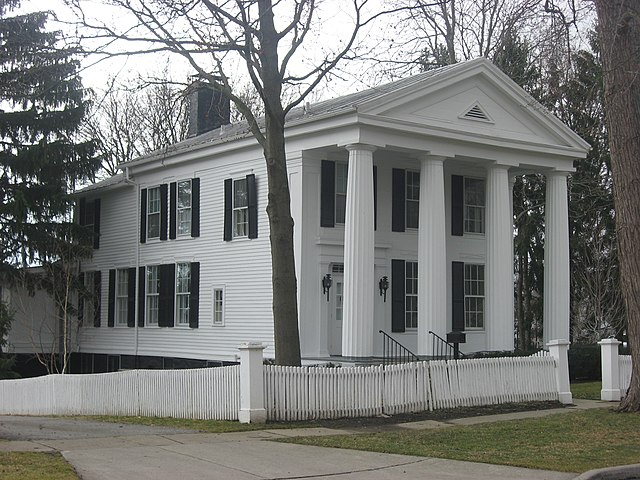Carrie (1952 film)
Videos
Page
Carrie is a 1952 American drama film based on the novel Sister Carrie by Theodore Dreiser. Directed by William Wyler, the film stars Jennifer Jones in the title role and Laurence Olivier as Hurstwood. Eddie Albert played Charles Drouet. Carrie received two Academy Award nominations: Costume Design, and Best Art Direction.

DVD release cover

Set photo with camera and sound technicians
Sister Carrie
Videos
Page
Sister Carrie (1900) is a novel by Theodore Dreiser (1871–1945) about a young woman who moves to the big city where she starts realizing her own American Dream. She first becomes a mistress to men that she perceives as superior, but later becomes a famous actress. It has been called the "greatest of all American urban novels".

Sister Carrie first edition 1900. The publishers kept the cover intentionally bland in order not to promote what was expected to be a controversial work.

House of Four Pillars, Dreiser's home in Maumee, where the book was written

Sister Carrie by R. Pauls; 1979 LP